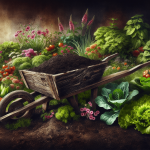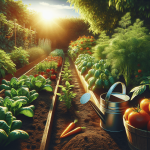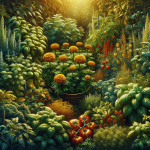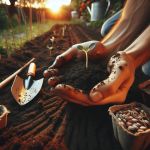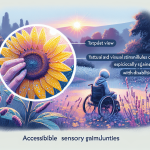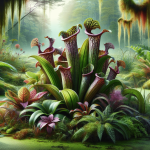This post may contain affiliate links. As an Amazon Associate, we may earn commissions from qualifying purchases.
What kind of plants turn a garden into a sensory wonderland? You might be asking this very question, especially if you’ve been dreaming about transforming a piece of your backyard into a haven of colors, scents, and textures. Sensory gardens can be magical spaces, offering diverse experiences that engage all your senses. You don’t have to be a botanist or landscape designer to pull it off; you just need to know which plants to choose.
Gardens that stimulate your senses aren’t just enjoyable; they’re therapeutic. They can be particularly beneficial for children, the elderly, and those with sensory processing disorders. But let’s not pigeonhole anyone—sensory gardens are for everyone who wants to soak in the beauty of nature on a multi-sensory level.
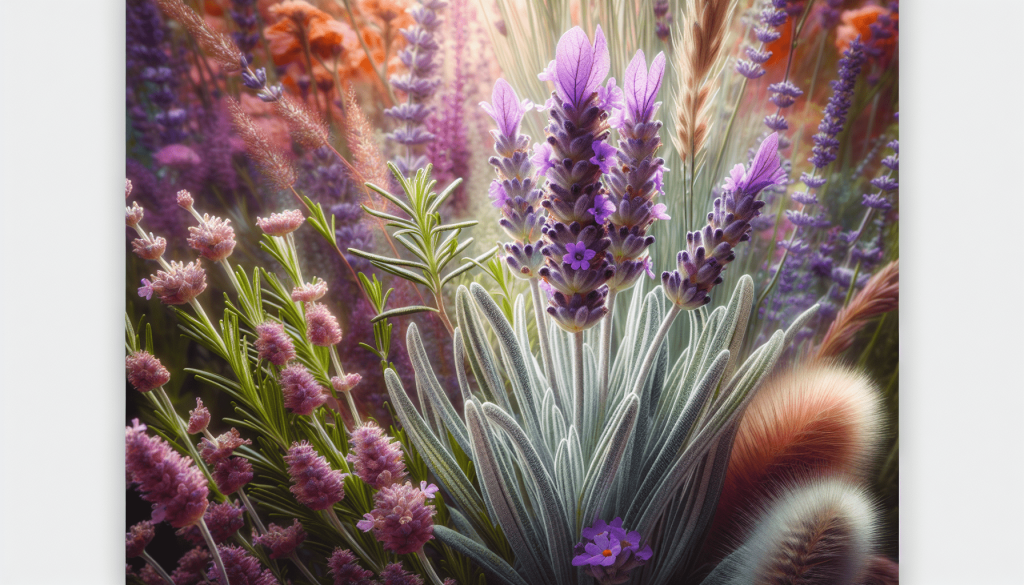
What is a Sensory Garden?
A sensory garden is designed to engage all five senses: sight, smell, touch, taste, and sound. By carefully selecting plants and elements that cater to multiple senses, you can create a space that is both beautiful and engaging.
Imagine strolling through a garden where the colors jump out at you, the air is filled with delightful fragrances, the textures invite touching, the occasional rustling of leaves or tinkling of water soothes the ears, and maybe even a few plants offer edible treats. It’s like being inside a painting that you can explore with your entire being.
Why Build a Sensory Garden?
Creating a sensory garden can be an enriching experience for you and others who visit your space. Here are some compelling reasons:
- Therapeutic Benefits: Sensory gardens can serve as therapeutic spaces for people with sensory processing issues, mental health concerns, or elderly individuals with dementia.
- Educational Value: These gardens can be educational for children, helping them learn about different plants and fostering a sense of curiosity about nature.
- Stress Relief: A sensory garden can be a sanctuary, providing a peaceful spot to decompress and reflect.
- Community Building: It can also be a fabulous communal project, bringing people together to create and maintain something beautiful.
Best Plants for Sight
Your eyes will immediately appreciate a well-designed sensory garden. Visual elements draw you in and set the stage for the other senses to join the party.
Vibrant Flowers
Colorful flowers are a must. Their sheer variety in hues and forms can captivate anyone.
- Sunflowers: Their large, bright yellow petals are like beacons, and they stand tall, almost as if they’re overseeing your little garden kingdom.
- Tulips: Available in an extensive range of colors, tulips can paint your garden with almost any shade you desire.
- Irises: With their intricate patterns and range of colors, irises create excellent focal points in a garden.
Foliage Plants
Don’t underestimate the power of green. Foliage can offer as much visual variety as flowers.
- Hostas: These leaves come in various shades of green and variegated patterns, creating an eye-catching backdrop.
- Ferns: Their intricate fronds provide a delicate texture and a lush, green contrast to more vividly colored plants.
- Coleus: Known for their vibrant, multi-colored leaves, they add visual interest throughout their growing season.
Structural Plants
Add some height and structure to your garden with these plants.
- Bamboo: Its tall, slender stalks provide a vertical dimension.
- Japanese Maple: Though a bit pricy, their unique foliage and tree shape add both color and elegance.
- Ornamental Grasses: Plants like miscanthus or fountain grass can create movement and elegance, especially when swaying in the wind.
Best Plants for Smell
Your nose will likely thank you every time you step into your sensory garden if you include fragrant plants.
Sweet-Scented Flowers
Flowers with exceptional fragrances can make your garden irresistible.
- Lavender: Its soothing aroma is perfect for relaxation.
- Honeysuckle: A climber that will offer a sweet, heady fragrance.
- Roses: The classic scent of roses is a must-have. Look for fragrant varieties that bloom repeatedly.
Herbs
Herbs often provide strong, pleasant scents and can be practical as well.
- Mint: Crush a leaf, and the menthol scent is incredibly refreshing.
- Basil: Another dual-purpose plant that’s perfect for sensory pleasure and culinary use.
- Sage: Offers a distinctive, warm scent that’s both calming and invigorating.
Fragrant Trees
Trees with aromatic flowers or leaves can help scent the entire garden space.
- Citrus Trees: Lemon or orange blossoms have a delightfully sweet fragrance.
- Eucalyptus: Known for its distinctive, refreshing scent.
- Magnolia: Though their bloom period is short, the massive flowers produce an unforgettable fragrance.
Best Plants for Touch
When it comes to touch, you’re looking for plants with interesting textures. These can range from soft and fuzzy to rough and spiky.
Soft and Fuzzy
- Lamb’s Ear: Its leaves feel like soft velvet.
- Mullein: Another plant with soft, fuzzy leaves that are a pleasure to touch.
- Chenille Plant: Its fluffy red flowers look like little caterpillars—soft and fun to feel.
Rough and Textured
- Tree Bark: Different trees have different bark textures—some smooth, some rugged.
- Cactus: They may be spiky, but their unique texture adds an interesting element.
- Coral Bells: These plants have beautiful, crinkly leaves that invite touch.
Unique Shapes
- Succulents: Their plump, water-storing leaves come in various shapes and textures.
- Horse Tail Plant: Its segmented, bamboo-like stalks offer a unique tactile experience.
- Snapdragon: Squeeze their blossoms, and they “snap” open, adding a playful element.
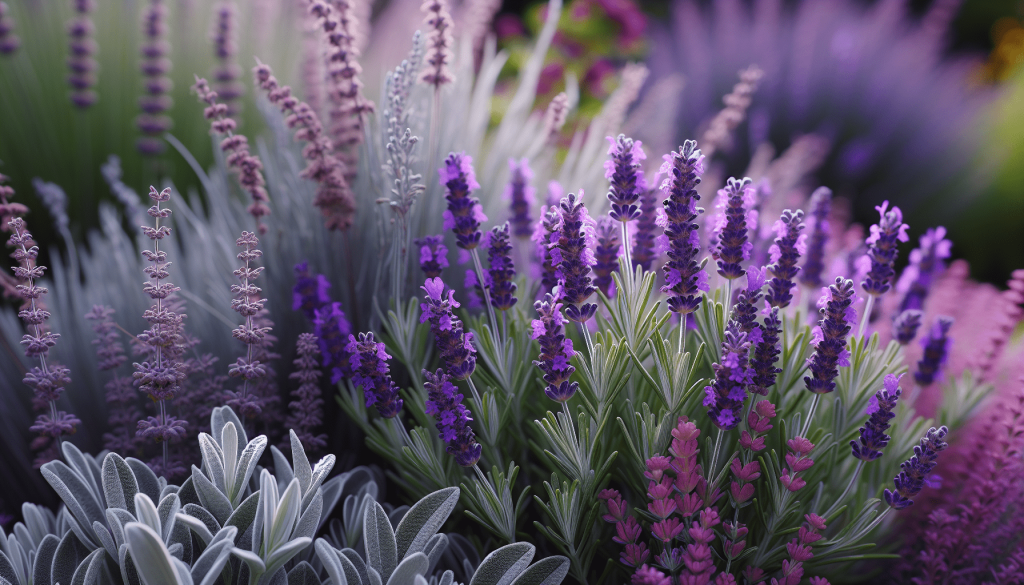
Best Plants for Taste
Growing edible plants brings a whole new dimension to your sensory garden. You can taste the fruits of your labor—literally!
Edible Flowers
- Nasturtium: Their peppery flowers and leaves are edible and decorative.
- Calendula: The petals can be sprinkled into salads for a burst of color and mild flavor.
- Pansies: These add a mild, minty flavor to dishes and look stunning.
Culinary Herbs
These can make your garden not just beautiful but also useful in the kitchen.
- Thyme: A versatile herb that adds flavor to many dishes.
- Parsley: Easy to grow and a must-have for culinary enthusiasts.
- Chives: Their mild onion flavor complements many recipes.
Edible Fruits and Vegetables
From berries to veggies, these plants can provide delicious seasonal treats.
- Strawberries: Sweet, juicy, and easy to grow in small spaces.
- Tomatoes: The smell of a tomato plant alone is refreshing, and the fruit is a summer staple.
- Peppers: They add color and flavor, doubling as visual and gustatory delights.
Best Plants for Sound
Sound might not be the first sense you think of in a garden, but it can make a significant impact. The rustling of leaves, chirping of birds, and even the buzzing of bees contribute to a relaxing atmosphere.
Grasses
Ornamental grasses can create soothing, rustling sounds as they move with the wind.
- Maiden Grass: Offers a gentle rustling sound.
- Pampas Grass: The large, fluffy plumes sway gracefully and create sound.
- Blue Oat Grass: Its thin, wiry leaves add a whispering sound to the garden.
Seed Pods
Some plants have seed pods that rattle, adding an intriguing auditory element.
- Honesty (Lunaria): The seed pods create a soft, rattling sound when shaken by the wind.
- Love-in-a-Mist: The dried pods of this plant produce a pleasant rattling.
- Red Hot Poker: Their flower heads can produce a gentle rustling sound.
Water Elements
While not exactly plants, adding water features can amplify the sensory experience.
- Water Lilies: Not only do they look beautiful, but sitting next to a pond with water lilies can offer the soothing sound of water.
- Lotus: Their broad leaves and stunning flowers are perfect for water gardens.
- Marsh Marigold: Ideal for growing near water features, adding both color and the soft sound of moving water.
Bird-Attracting Plants
Plants that attract birds can bring the beautiful sound of chirping to your garden.
- Sunflower: Besides looking great, the seeds attract birds.
- Elderberry: Birds love the berries.
- Serviceberry: Provides food and shelter for many bird species.
Essential Tips for Creating Your Sensory Garden
Creating a sensory garden can be a rewarding project, but it does take some planning. Here are a few tips to keep in mind.
Location, Location, Location
Choosing the right spot is crucial. The area should get sufficient sunlight, but also consider some shade for plants that require it. Accessibility is another factor; think about whether you want the garden to be a secluded retreat or a focal point.
Soil and Drainage
Good soil is the foundation of any successful garden. Ensure your soil is well-draining, and amend it as needed to suit the plants you’re including. You might need different types of soil for various plants, so some segmentation within your garden could be beneficial.
Seasonal Interests
Aim to include plants that offer sensory appeal throughout the year. This way, your garden remains engaging no matter the season.
| Season | Plants |
|---|---|
| Spring | Tulips, Daffodils, Irises |
| Summer | Sunflowers, Lavender, Tomatoes |
| Fall | Chrysanthemums, Ornamental Grasses, Asters |
| Winter | Evergreen Shrubs, Eucalyptus, Winter Jasmine |
Maintenance
Every garden requires upkeep. Make sure you’re ready for the commitment to water, weed, prune, and possibly replace plants. Choose low-maintenance varieties if you want to keep it simple.
Accessibility
Consider who will be using the garden. If it’s for children or elderly individuals, make sure paths are easy to navigate and avoid plants with toxic properties. Incorporate seating areas and perhaps even raised beds for easier access.
Safety
Especially if the garden is for kids or pets, ensure that you avoid or segregate poisonous plants. Labeling plants can also be helpful for educational purposes and safety.
The Final Flourish
To finish off your sensory garden, don’t forget about non-plant elements that can enhance the experience. Think about adding wind chimes, bird feeders, or even small sculptures. Pathways made of different materials can also contribute to the tactile experience.
Creating a sensory garden is like painting with nature. It invites you to use your full palette of senses and engage with your environment on a deeper level. From the vibrant colors that please your eyes to the fragrant herbs that tempt your nose, and the soft lamb’s ear that beckons your touch, each element works together to create a lush, living tapestry.
So, which plants will you choose for your sensory garden? It’s your personal masterpiece awaiting to be crafted, designed for sensory delight and endless enjoyment. Dive in, plant your wonders, and watch your sensory retreat come to life.



